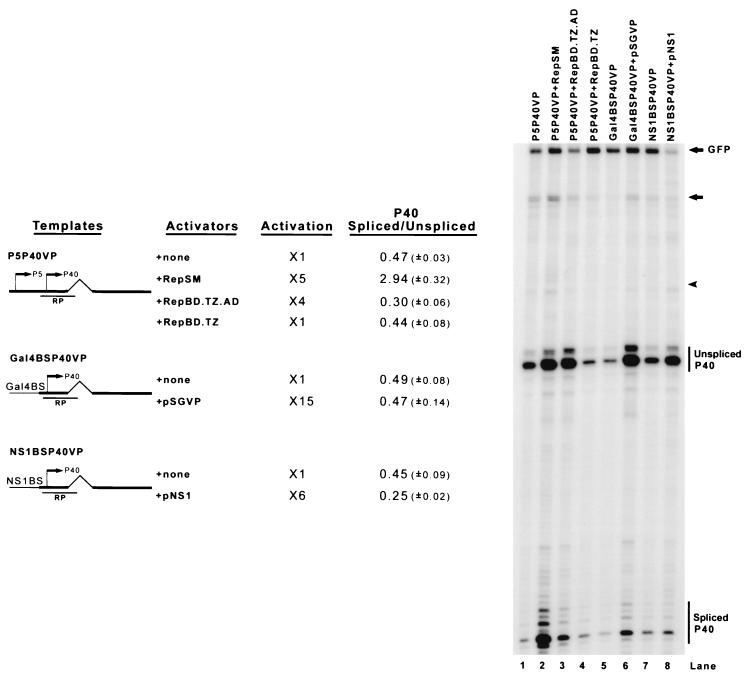FIG. 4.
Activation of the P40 promoter is not enough to enhance the ratio of spliced to unspliced AAV RNA. 293 cells were cotransfected with minimal AAV capsid gene constructs bearing either the native P5 promoter (P5P40VP), three repeated Gal4 binding sequences (Gal4BSP40VP), or the MVM NS1 binding sequence (NS1BSVP) as described in the text, along with the activator plasmids shown. RepBD.TZ expressed only the oligomerized Rep binding domain (Rep aa 1 to 244), RepBD.TZ.AD expressed a Rep oligomerized binding domain/VP16 activation domain chimera, pSGVP expressed the chimeric Gal4 binding domain/VP16 activation domain fusion, and pNS1 expressed the MVM NS1 protein. To evaluate the levels of promoter activation, an EGFP-expressing plasmid (pEGFP) was cotransfected at 0.04 μg/60-mm dish in all groups as an internal control. Total RNAs were protected with the RP probe and a GFP probe. Bands specifically protected by P40-generated spliced and unspliced RNA and GFP RNA from a representative experiment are shown and labeled on the right. The fold activation and quantitations of the ratio of spliced to unspliced RNAs from at least three separate experiment are shown. Activation levels were standardized to that of the GFP internal control and compared to the unactivated background, which was set to 1 (lanes 1, 5, and 7). The ratios of spliced to unspliced RNAs include standard deviations in parentheses. For lanes 1 to 4, the unlabeled arrow and arrowhead denote a combination of unspliced (arrow) and spliced (arrowhead) P5 plus a low level of read-around transcription RNA; in the other lanes, these bands are assumed to derive from plasmid read-around transcription.

